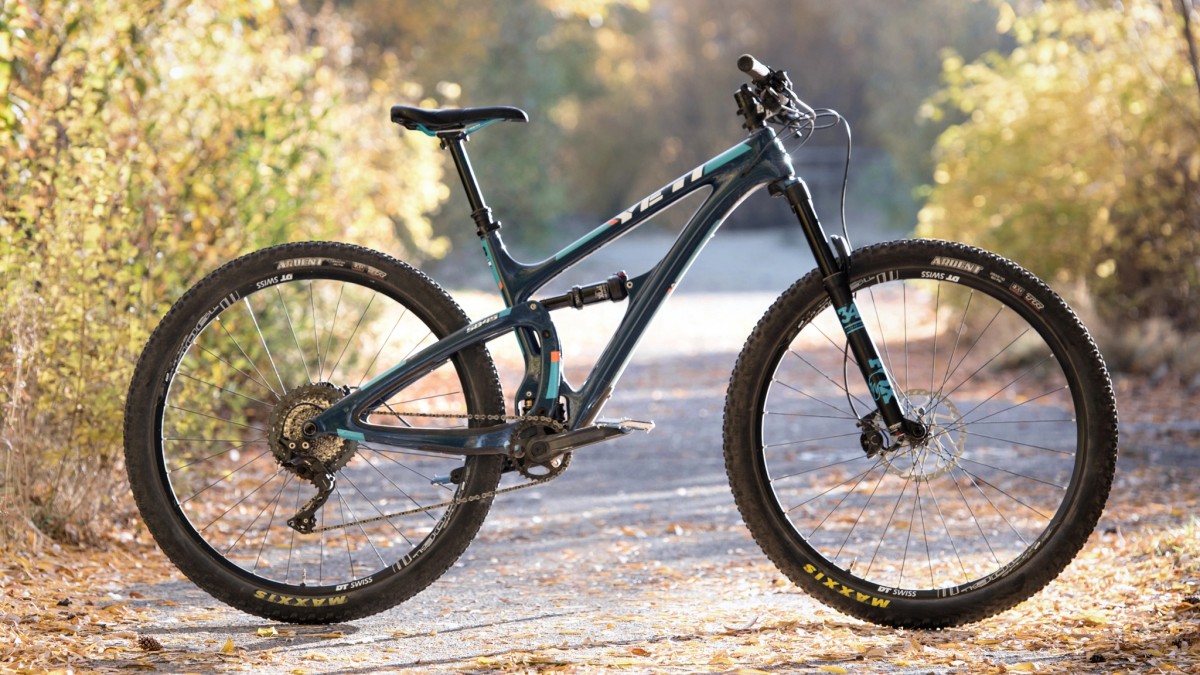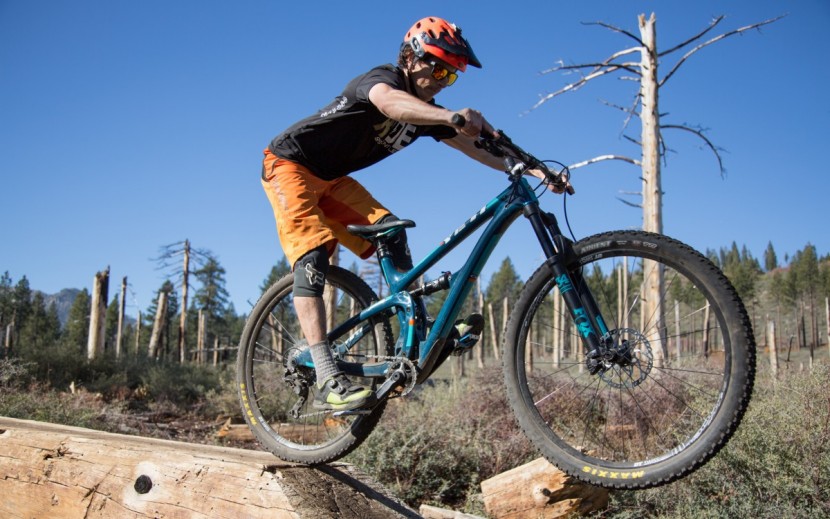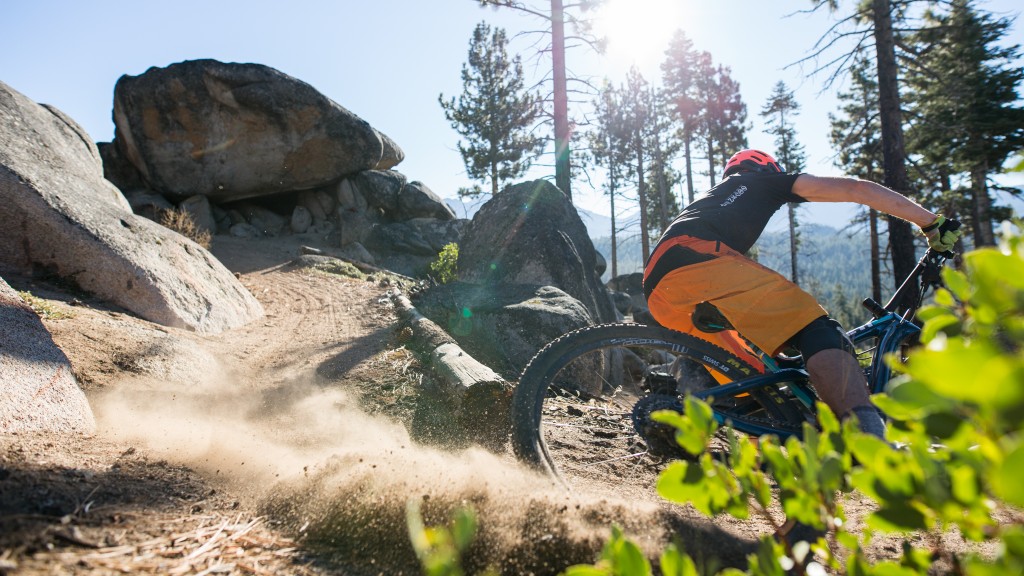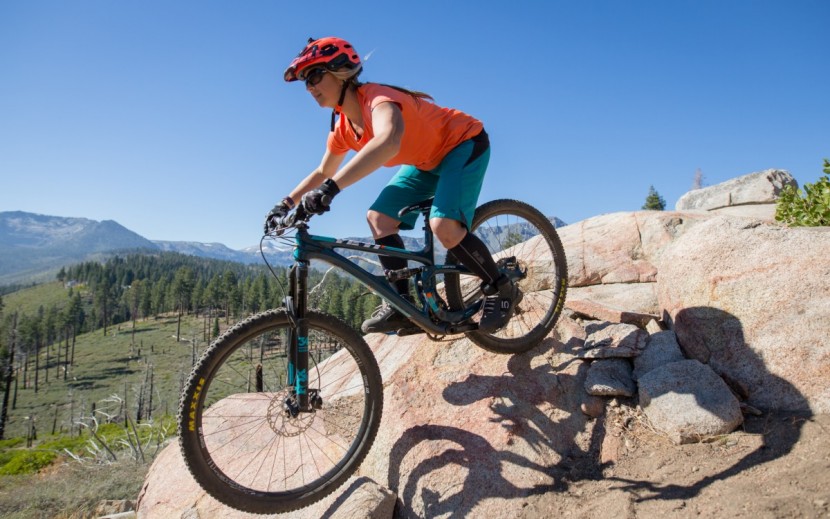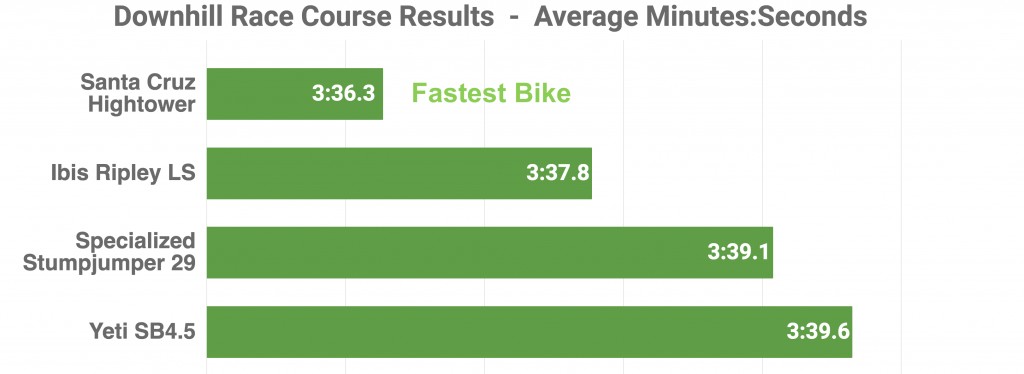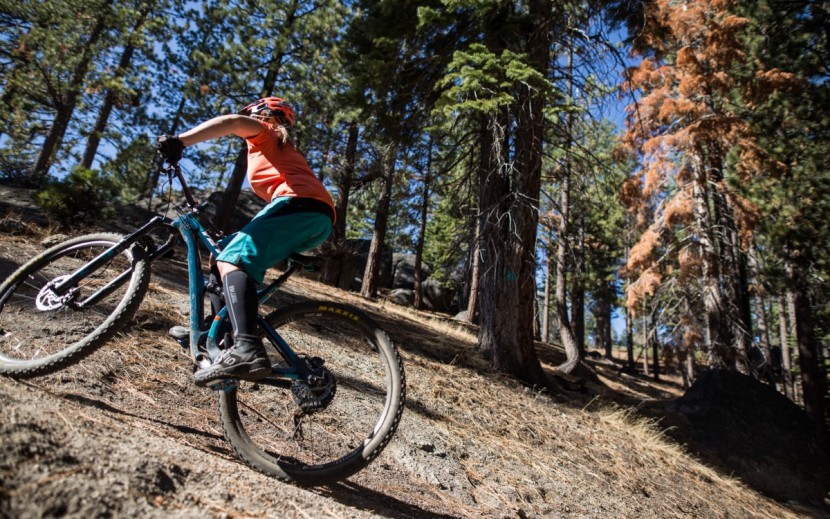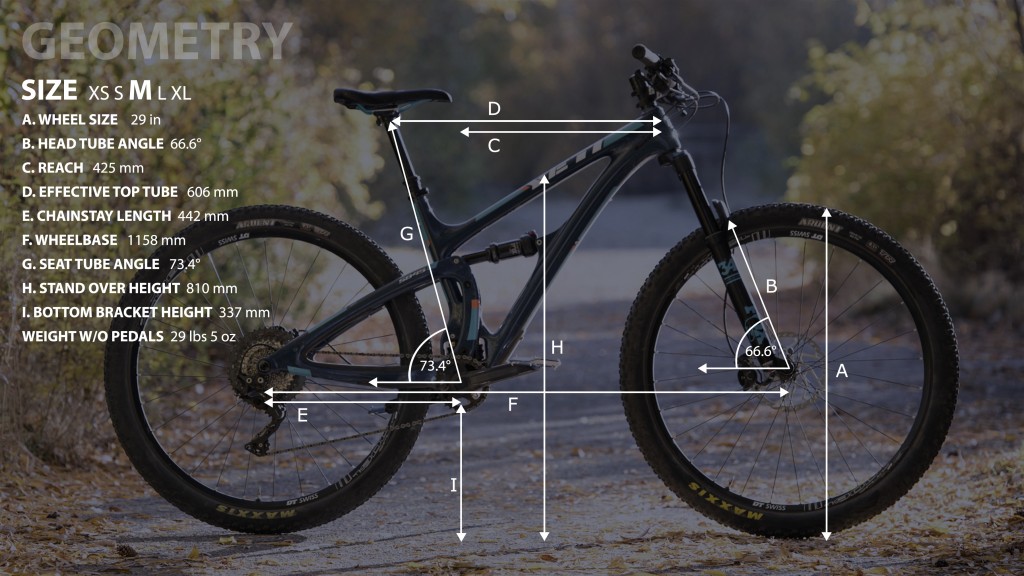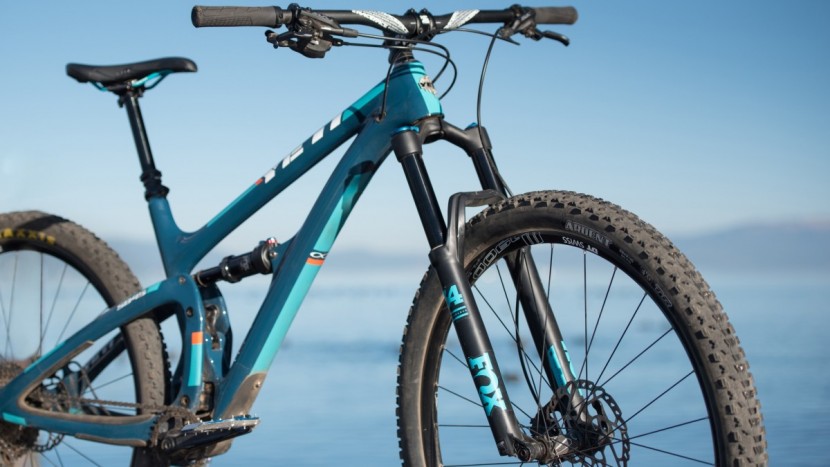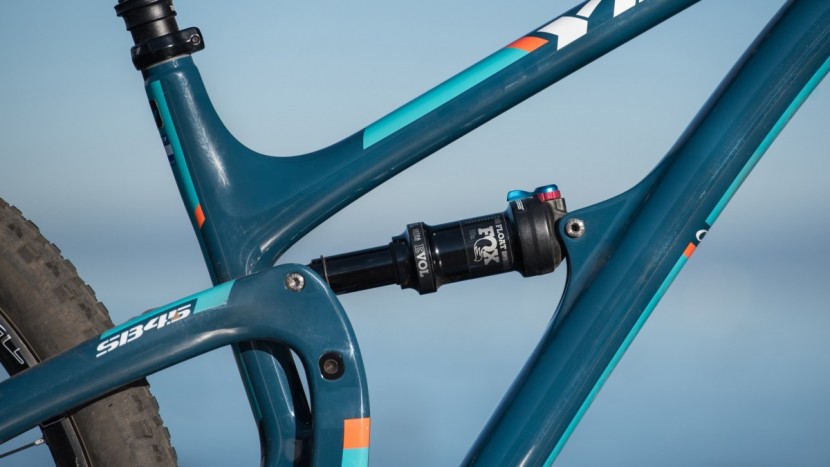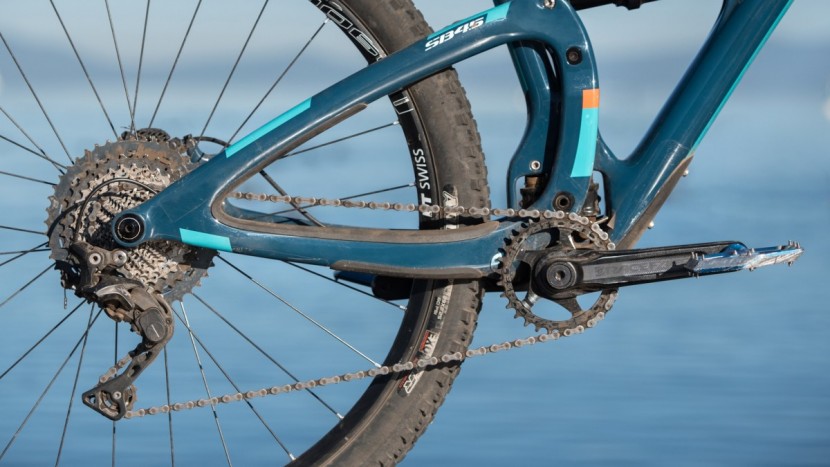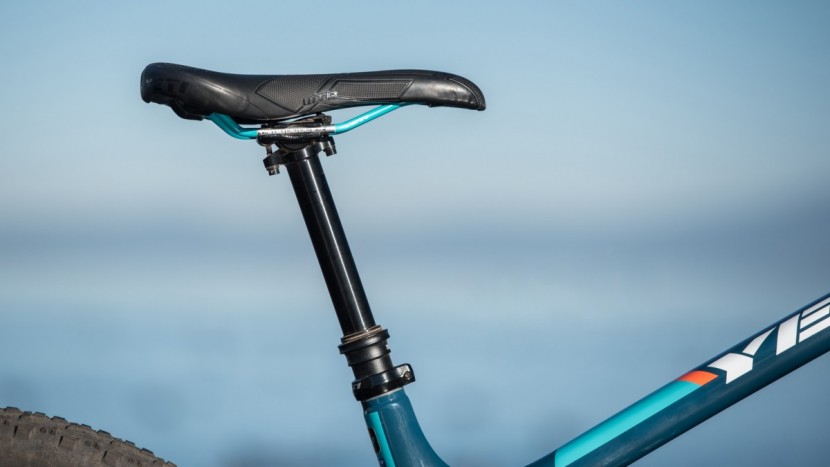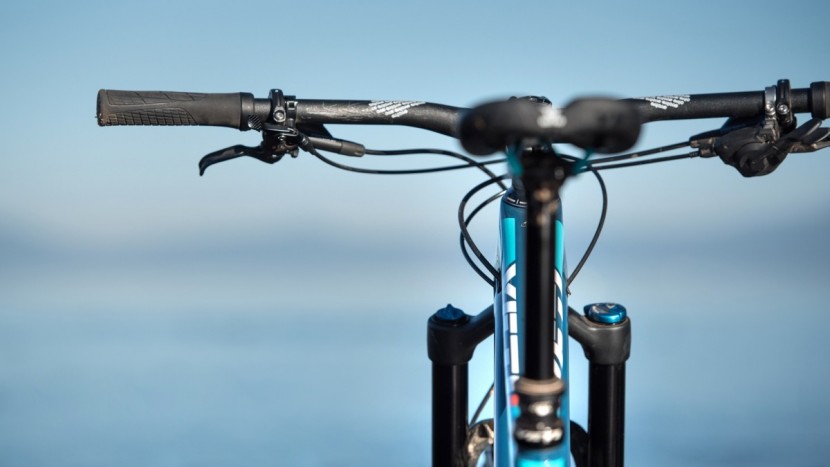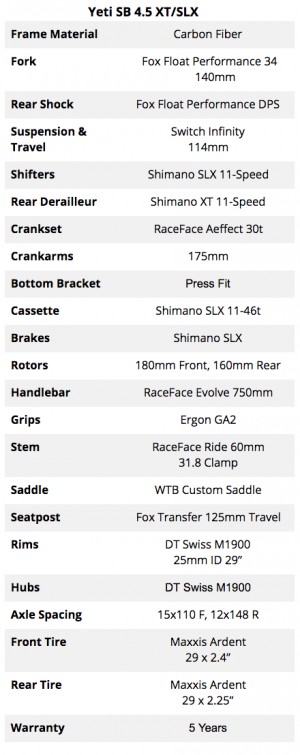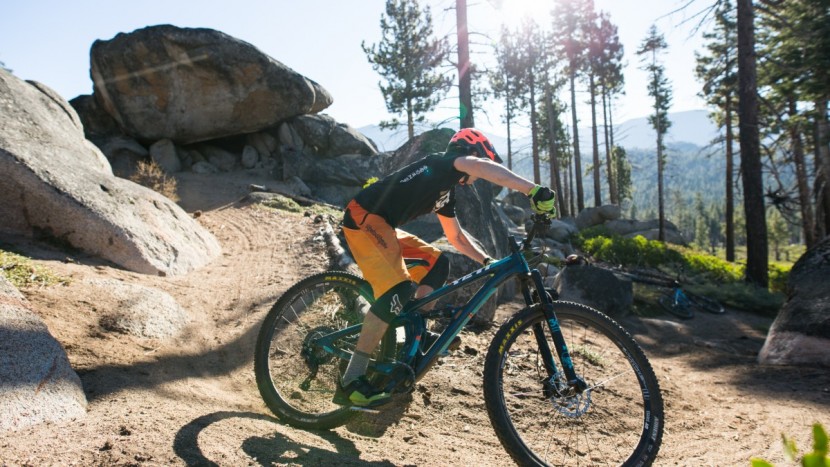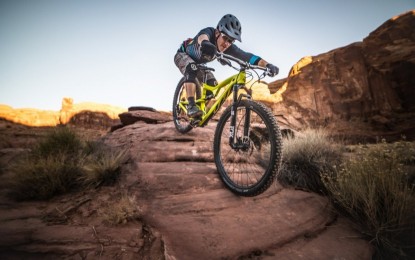Yeti SB4.5 SLX/XT 2018 Review
Our Verdict
Our Analysis and Test Results
The Yeti SB4.5 has been discontinued. It has been replaced with the SB130 which has more travel and slacker angles. We hope to review the new bike in the coming monthes.
Whenever we grab the SB4.5 for a hot commuter lap on our local link-up trail, we're reminded of how enjoyable it is to feel that fast. This bike is truly impressive in its element. The other three 29er bikes we tested it directly against, however, are better all around bikes. We rode the SB4.5 head-to-head against the 2018 Ibis Ripley LS, 2018 Santa Cruz Hightower, and 2018 Specialized Stumpjumper 29. Then we compared them to all the other trail bikes we've tested.
Fun Factor
Riding the Yeti SB4.5 can be more fun than a barrel of monkeys. It can also be very un-fun. The key determining factors are terrain choice and rider attitude. In the right situation with the proper mindset, the SB4.5 can deliver a tremendously precise and quick-handling ride. When you put it in the wrong situation, things go south fast.
The SB4.5 is the most fun on smooth and mellow terrain. Pumping through berms and rolls is a pleasure and the bike likes to slice and dice its way down sections of trail with isolated obstructions. This Yeti is responsive and sporty and it likes to get up and off the ground. Hopping it over stumps, bumps, and jumps is easy, requiring minimal body language. Even the horrendous tires remain grounded as speed increases on calm trails. On smooth and buff trails, the SB4.5 shares many fun-loving characteristics with the Ibis Ripley LS. The main difference is that the Ripley LS keeps its easygoing and sharp personality even when the going gets rocky. The Yeti gets very disagreeable.
When the trail gets rough, the Yeti SB4.5's fun factor plummets in a hurry. The ride is incredibly harsh and unstable. The level of control on less-than-smooth surfaces is most unpleasant. This is where rider mindset comes into play. It is important to remember you are on a short travel bike and the fun-level depends on your ability to ride it accordingly. A certain element of finesse and a hyperfocus on line choice will go a long way. This is especially true for riders who traditionally ride longer travel, aggressive bikes. That said, there are some shorter travel bikes that are a blast when driven with an aggressive attitude. The Santa Cruz Tallboy and Ibis Ripley are two examples that come to mind. The Yeti SB4.5 has very similar travel and geometry numbers to these two bikes but it can't come close to matching the attitude.
On a more positive note. This bike is incredibly efficient. There is no doubt the SB4.5 is a great option for long days in the saddle. Conserving energy over a six-hour ride makes for a more fun adventure. The Yeti requires less power and rider input to ascend hills. Less energy spent leaves more energy to smile.
The SB4.5 scored a 4 out of 10 for its fun factor. This bike can be fun, but it requires the right terrain. The Ibis Ripley scored a 10 out of 10 with its playful short-travel perfection. The Yeti SB5.5 and Santa Cruz Hightower both posted a 9 out of 10 for their capability on the gnar that is sure to leave you smiling.
Downhill Performance
When pointed downhill, the Yeti SB4.5 reacts like the cross-country focused short-travel bike that it is. Your experience is reliant on the trail surface. On fast flow trails with swooping corners the Yeti is rock solid. If you crave a healthy dose of rocks and roots, the Yeti leaves a lot to be desired. Much like the fun-factor, downhill experience relies heavily on the rider attitude. This is a 114mm bike and needs to be ridden as such.
We will start with the good. On smooth sections of trail, the SB4.5 operates in a manner reminiscent of the winning Ibis Ripley LS. Carving through corners and swooping through sinuous singletrack is easy and precise. The minimal amount of body language required to steer this bike is impressive. The Yeti encourages riders to get on the pedals out of corners to keep building speed. Even trails with sporadic and well-spaced rough patches are fun. Just hold on tight through the rough zones and continue to carry on through the flow.
The geometry, while it appears relaxed, annihilates confidence on steep and nasty chutes. Riders have a hard time getting far enough back on this bike. The front end, while it is significantly slacker (.7 degrees) than the Ibis Ripley is far less confident. It feels like you will be pitched over the bars at any second.
Our chief complaint is the harsh, loud and apprehensive performance on rough terrain. If you exclusively ride new-school flow trails, feel free to ignore the following criticisms. The SB4.5 is horrible through sustained rocks or the slightest hint of gnar. Working through jagged sections of trail creates a horrendous clunking noise. It sounds like the frame is broken. Testers spent a lot of time adjusting air pressures and still experience the same harsh bottom-out feel. In addition. Riders who want to get radical will not like this bike.
The rim/tire combo made traction on mixed/loose conditions is abysmal. The front end required an exhausting amount of attention to keep it on line. Any trail surface other than hardpack dirt or sand brought about an even-larger sense of instability. One of our test tracks has a lot of gravel and golf ball sized rocks on it. The SB4.5 never feels like it's on a secure line. It's just dancing around with an enormous lack of control.
The XT/SLX build kit on our test bike is a mixed bag in terms of the effect on downhill performance. The Fox 34 Performance fork is a source of contention among testers. Lighter riders found it to be nice and plush, offering great small bump performance. One heavier found it near impossible to find an air pressure that successfully balanced bottom out support and small bump feel. The Maxxis Ardent tires are not impressive. Yes, they roll fast but cornering bite is almost non-existent. In looser sections of trail, the bike felt like it was surfing all over the trail and never hooked up. The Shimano SLX brakes are solid and perform far better than the SRAM Level brakes on the Ibis Ripley and Level T brakes on the Santa Cruz Hightower. The SLX brakes have superior braking power and require far less rider hand strength.
The Yeti 4.5 is near the back of the testing field exceptionally harsh downhill skills. Among short travel bikes, the Ibis Ripley and Santa Cruz Tallboy both scored in the middle of the field, a huge compliment for such short travel bikes. The burly and ultra-capable Santa Cruz Hightower LT and Yeti SB5.5 lead the test.
The SB4.5 finishes last in our downhill time trails. The course took 3 minutes and 38 seconds on average.
Climbing Performance
If there is one area where the Yeti cannot be denied, it's the impressive uphill performance. This bike is an ultra-effective climber that makes the most of rider input. The SB4.5 was the clear favorite for multi-hour slogs with copious amounts of climbing. Pair this efficiency with the most uphill-friendly drivetrain specification in the test and you have a winning recipe.
The Yeti's short cockpit puts riders in an upright position right on top of the bottom bracket. Positioning is comfortable and is no-doubt conducive to long days in the saddle. A 337mm bottom bracket height is right in line with the rest of our test bikes. Pedal strikes are a relative non-issue. The 1158mm wheelbase surprisingly makes it one of the longer bikes in the test. It is surprising because it navigated uphill switchbacks with relative ease. The front wheel largely stayed planted when negotiating corners. When steering hard, the front tire did push or wander on occasion but it required a fairly sharp corner paired with substantial power input.
The climbing motion is extremely calm and effective. Rider energy is utilized very efficiently and there is absolutely no sense of despair when starting up long climbs. This bike hit the scales at 29 lbs 5 ounces making it the lightest in the test. While this is only 1 ounce lighter than the Ripley LS, it feels like a more substantial weight gap than the numbers suggest. Scaling mountainsides on the Yeti is about as pleasant as it could be. It can be a balancing act to keep the rear wheel weighted on steep terrain. When the soil gets loose, weight distribution is important as the 2.25-inch Maxxis Ardent has a tendency to spin out. We left the climb switch wide open on this bike save for fire road and pavement climbs.
Our uphill test track is filled with technical maneuvers. The SB4.5, despite its uninspiring rear tire, makes short work of it. The lightweight feel of this bike inspires you to punch right over whatever object lays in front of you. During our consumer direct test, we were faced with some 32+ lb bikes. Mustering up the core strength to blast up a technical feature was a tall task. The Yeti was the polar opposite. Using less energy to drag your bike up and over and rock ledges and steps is an enormous bonus, especially in the middle of a multi-hour ride.
The 30:46t climbing gear on our Yeti was super comfortable. While Shimano 46-tooth cassettes can't quite match the gearing on SRAM Eagle 12-speed drivetrains, it gets you pretty close when paired with a 30-tooth chainring. The Shimano SLX shifter definitely has a stickier feeling than some of the SRAM options. This groupset only accelerated the bike's excellent climbing abilities.
The Yeti SB4.5 is a lightfooted climber that offers superb efficiency. The SB4.5 scored at the top of the test with the Ibis Ripley and Santa Cruz Tallboy. The Specialized Camber and Pivot Mach 429 finished just a step behind.
The SB4.5 finished in second place on our technical uphill time trails. It's efficient pedaling couldn't make up for the light bike getting knocked offline in the rocky turns. The more stable Ripley won out overall.
Ease of Maintenance
Consumers should be concerned with performance, value, and component specifications when purchasing a bike. Cost of maintenance should be an important consideration as well. Certain suspension designs require more attention to run smoothly and free of creaks. Others brands are inherently easier to work with. Also consider recommended service intervals for your fork, rear shock, brakes, drivetrain and dropper post. Read about how we ranked the bike's ease of maintenance in the full review.
Yeti's Switch Infinity design is a dual link system. The “Switch Unit” located above the bottom bracket adds another level of complexity but is fairly easily serviced. The Fox suspension has a less frequent suggested service interval than RockShox options. We rate it higher even though many mechanics claim to see Fox components more frequently. Shimano brakes are easier to bleed than SRAMs and use mineral oil instead of corrosive fluids.
Frame Design and Suspension Overview
The SB4.5 is built around 114mm of rear wheel travel and uses Yeti's Switch Infinity system. Switch Infinity features a main pivot switch unit that is located above the bottom bracket. This mechanism was developed with help from Fox and allows the rear triangle to move upward as the bike moves through its travel. This SB4.5 also has a stout suspension link located on the seat tube above the main pivot and below the shock mount. We found this the Switch Infinity system to be an effective climber on the SB4.5 but felt more linear than we expected. The rear end was very jarring on the descent.
We took some time to measure our medium SB4.5. A 66.6-degree head tube angle met with a 606mm effective top tube and 442mm chainstays to create a 1158mm wheelbase. The 73.4-degree seat tube angle is relatively slack but put you in a nice position over the 337mm high bottom bracket. The Yeti hit the scale at 29 lbs 5 ounces. This made it the lightest bike in our test ever-so-slightly edging out the Ibis Ripley LS.
Build
Ride characteristics are obviously important when making a purchase decision. It is also important to consider the components that come stock on your shiney new bike. The SB4.5 SLX/XT wears some impressive components to go along with its lofty $4,799 price tag.
Fork and Shock -Testers have conflicting opinions of the Fox 34 Performance fork. This fork sports Fox's budget GRIP damper. There is no-doubt this fork is plush and smooth. The action in the top of the stroke is impressively supple on small rapid-fire bumps. The debate kicked off when certain testers complained that the fork dives way too deep it's travel too easily. Other riders didn't find this to be an issue. Some folks heavily preferred the stiffer but harsh RockShox Revelation RC found on the Specialized Stumpjumper and Santa Cruz Hightower. As usual, it boils down to preference.
A three-position Fox Float DPS shock is mounted on the rear of this spritely short-travel sled. The shock performed admirably but testers found it required us to run a far higher air pressure than expected. Yeti recommends 27% sag. This surprised us in a day when 30-35% sag is commonplace on a trail bike.
Wheels and Tires — Our test bike rolls on a DT Swiss M1900 wheelset. The 25mm rims are standard fare for a short travel trail bike. The hub engagement is fine. When spending $4,800, we would like to see higher end hubs.
The rubber that comes stock on the SLX/XT build is weak. The front tire is a 2.4-inch Maxxis Ardent. That is properly wide for a trail bike, but the poor shoulder knobs don't make for a confident front end. In conditions with a lot of loose rock or pebbles, this tire does not hook up. Testers likened it to dancing on top of the trail surface rather than enjoying a solid planted feel. The 2.25-inch Maxxis Ardent rolls fast but has no braking bite or confidence in the corners.
Groupset — A Shimano XT 1x11 drivetrain powers this light bicycle. A 46-tooth rear cassette is paired with a 30-tooth chainring. This provides a nice, comfortable climbing gear for long uphill grinds that this bike seems to crave.
Shimano SLX brakes offer sufficient power and the classic on-or-off feel that Shimano is known for. Braking power fits the intended applications. The Yeti's brakes are among our favourites in the test along with the SRAM Guide R brakes found on the Specialized Stumpjumper.
Handlebars, Seat, and Seatpost — The Fox Transfer dropper post is silky smooth and operated flawlessly throughout testing. This cable actuated post performed well even when the temperature dipped well below freezing. A WTB saddle went unnoticed throughout testing.
RaceFace Evolve 750mm handlebars steer this carbon bike. The 750mm bars ware nice for cutting through tight sections of trail, but we would prefer them to be closer to 780mm. We would also prefer a 35mm clamp diameter for a stouter front end.
Build Options
Jumping up $400 gets you to the $5,199 GX Eagle build kit. This iteration is identical to our test bike save for a couple key changes. A SRAM GX Eagle 12-speed drivetrain powers this rig which gets you an extra plush climbing gear. In addition, the Shimano SLX brakes are swapped out for SRAM Guide R 4-piston brakes which offer better modulation. Our testers largely prefer Shimano brakes.
Beyond the GX Eagle build lives the $6,399 Shimano XT TURQ version. TURQ is the slightly higher-end carbon fiber when compared to our test bike. This saves a little bit of weight, usually less than a half pound, with the same frame stiffness. This iteration features a Fox 34 Factory fork and Factory DPS shock. Yup, it's shiney. DT Swiss 350 hubs are laced to XM421 rims which still have a 25mm inner diameter. Braking duties are performed by Shimano XT brakes and the drivetrain is a Shimano XT 1x11.
Value
The SB4.5 SLX/XT's $4,799 price tag is a hefty pill to swallow. It stands out as a sub-par value as it can't match the pure-trail bike performance of the slightly more affordable Ibis Ripley. It also cannot come close to emulating the well-rounded composure of the Santa Cruz Hightower. That said, riders who are focused on motoring up and down smoother or buff singletrack will appreciate the Yeti's narrow skill set. The build specifications are decent for the price.
Suggested Upgrades
The very first component we would address is the tires. This bike would be a good candidate for running some meaty tires. Unfortunately, according to the Yeti website, the maximum rear tire the size the frame will accept is 2.3-inches. This is disappointing. Knowing this, we recommend a Maxxis Minion DHF 2.5 up front with 2.3-inch Minion DHR II in the rear. More traction means more fun, even if you sacrifice a bit of rolling speed.
Heavier riders should consider a beefier fork if they plan on pushing this bike hard. A 35mm stanchioned RockShox Pike would make for a tougher front end. Adding a 35mm bar/stem combination up front would make for a vastly improved feel up front.
Conclusion
The Yeti SB4.5 SLX.XT is a swift climbing trail bike that leans towards the cross country application. There is no-doubt this 114mm bike is peppy and offers sharp and precise handling. Powering this feathery bicycle uphill is efficient and easy. Things start to go south when you are driving the Yeti through mixed trail surfaces and rougher terrain. This bike simply does not have the attitude to confidently and calmly handle healthy doses of chunk. The result is a loud and clunky ride that lacks a sense of stability and comfort. This is still a solid option for those riders focused on motoring around buff trails.


